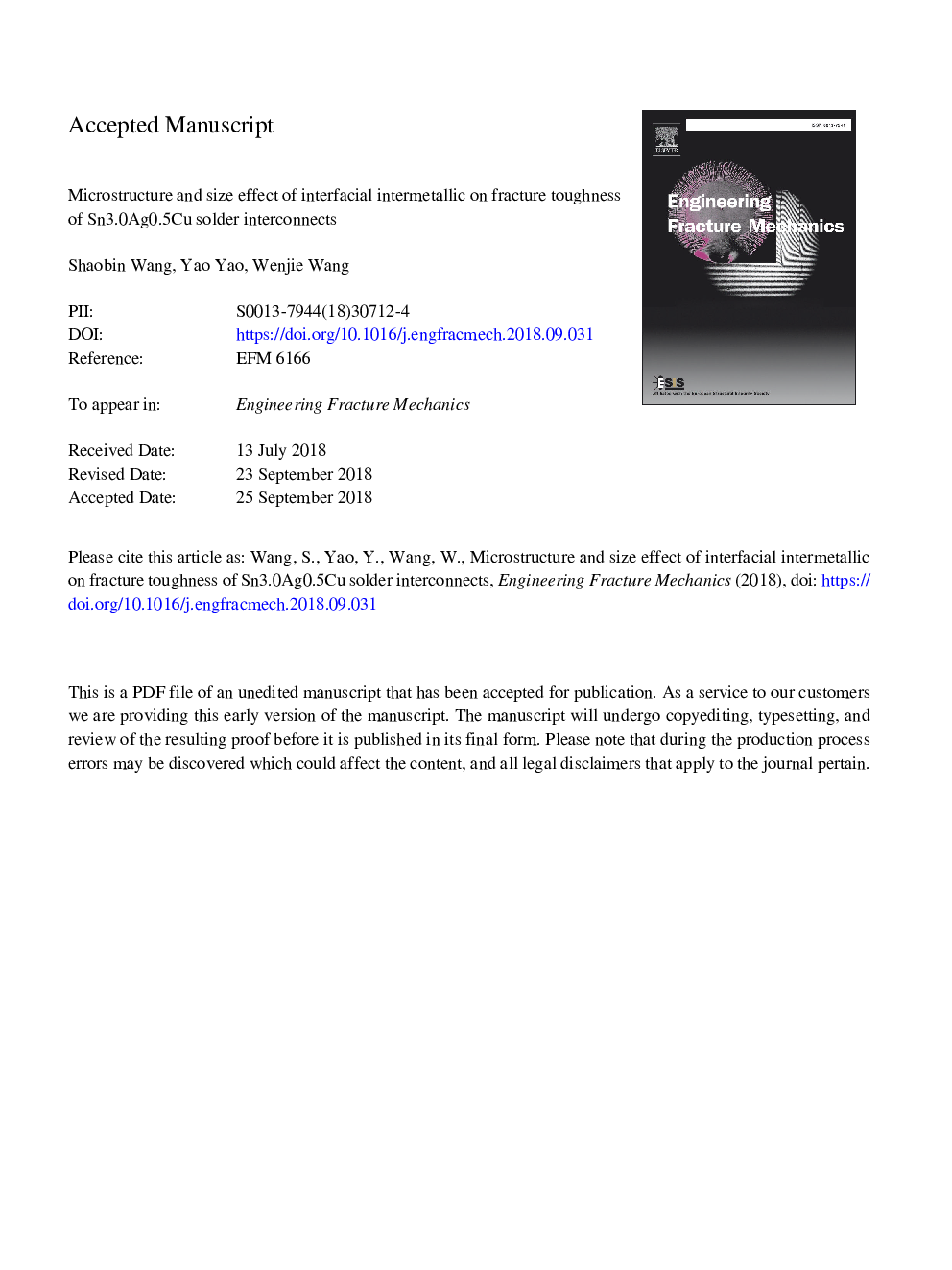| Article ID | Journal | Published Year | Pages | File Type |
|---|---|---|---|---|
| 11027838 | Engineering Fracture Mechanics | 2018 | 38 Pages |
Abstract
The effects of solid state thermal aging and liquid state reflow on the interfacial fracture toughness of Sn3.0Ag0.5Cu solder interconnects are experimentally investigated. Solid state thermal aging for compact tension specimens was treated at 210â¯Â°C up to 48â¯h, the liquid state reflow was treated at 230â¯Â°C up to 48â¯h as well. Three types of fracture modes are observed including fracture in solder, intermetallic/solder interface and intermetallic layer. In general, the fracture toughness of intermetallic decreases with increasing of treating time under both liquid and solid states. After solid state thermal aging, the fraction of intermetallic fracture decreases while the proportion of solder fracture and interfacial fracture increases. After liquid state reflow, the fracture keeps being dominated by the intermetallic fracture. The morphology evolution and grain size of intermetallic layer are analyzed. In solid state thermal aging, the intermetallic layer tends to transit from the initial scallop-type to lamellar-type. While in liquid state reflow, the intermetallic layer tends to keep scallop-type. Both intermetallic morphology and grain size are found to be essential factors that affect the fracture type and toughness. The effect of intermetallic grain size on fracture toughness is investigated based on the size effect theory. The predicted fracture toughness of solder interconnects after 230â¯Â°C reflow agree well with the experimental results.
Related Topics
Physical Sciences and Engineering
Engineering
Mechanical Engineering
Authors
Shaobin Wang, Yao Yao, Wenjie Wang,
